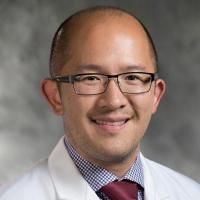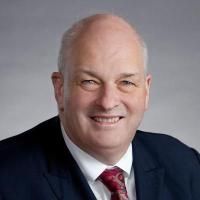Two- and three-year outcomes of minimally invasive and hybrid correction of adult spinal deformity.
Date
2022-04
Journal Title
Journal ISSN
Volume Title
Repository Usage Stats
views
downloads
Citation Stats
Attention Stats
Abstract
Objective
Previous studies have demonstrated the short-term radiographic and clinical benefits of circumferential minimally invasive surgery (cMIS) and hybrid (i.e., minimally invasive anterior or lateral interbody fusion with an open posterior approach) techniques to correct adult spinal deformity (ASD). However, it is not known if these benefits are maintained over longer periods of time. This study evaluated the 2- and 3-year outcomes of cMIS and hybrid correction of ASD.Methods
A multicenter database was retrospectively reviewed for patients undergoing cMIS or hybrid surgery for ASD. Patients were ≥ 18 years of age and had one of the following: maximum coronal Cobb angle (CC) ≥ 20°, sagittal vertical axis (SVA) > 5 cm, pelvic incidence-lumbar lordosis mismatch (PI-LL) ≥ 10°, or pelvic tilt (PT) > 20°. Radiographic parameters were evaluated at the latest follow-up. Clinical outcomes were compared at 2- and 3-year time points and adjusted for age, preoperative CC, levels operated, levels with interbody fusion, presence of L5-S1 anterior lumbar interbody fusion, and upper and lower instrumented vertebral level.Results
Overall, 197 (108 cMIS, 89 hybrid) patients were included with 187 (99 cMIS, 88 hybrid) and 111 (60 cMIS, 51 hybrid) patients evaluated at 2 and 3 years, respectively. The mean (± SD) follow-up duration for cMIS (39.0 ± 13.3 months, range 22-74 months) and hybrid correction (39.9 ± 16.8 months, range 22-94 months) were similar for both cohorts. Hybrid procedures corrected the CC greater than the cMIS technique (adjusted p = 0.022). There were no significant differences in postoperative SVA, PI-LL, PT, and sacral slope (SS). At 2 years, cMIS had lower Oswestry Disability Index (ODI) scores (adjusted p < 0.001), greater ODI change as a percentage of baseline (adjusted p = 0.006), less visual analog scale (VAS) back pain (adjusted p = 0.006), and greater VAS back pain change as a percentage of baseline (adjusted p = 0.001) compared to hybrid techniques. These differences were no longer significant at 3 years. At 3 years, but not 2 years, VAS leg pain was lower for cMIS compared to hybrid techniques (adjusted p = 0.032). Those undergoing cMIS had fewer overall complications compared to hybrid techniques (adjusted p = 0.006), but a higher odds of pseudarthrosis (adjusted p = 0.039).Conclusions
In this review of a multicenter database for patients undergoing cMIS and hybrid surgery for ASD, hybrid procedures were associated with a greater CC improvement compared to cMIS techniques. cMIS was associated with superior ODI and back pain at 2 years, but this difference was no longer evident at 3 years. However, cMIS was associated with superior leg pain at 3 years. There were fewer complications following cMIS, with the exception of pseudarthrosis.Type
Department
Description
Provenance
Subjects
Citation
Permalink
Published Version (Please cite this version)
Publication Info
Chan, Andrew K, Robert K Eastlack, Richard G Fessler, Khoi D Than, Dean Chou, Kai-Ming Fu, Paul Park, Michael Y Wang, et al. (2022). Two- and three-year outcomes of minimally invasive and hybrid correction of adult spinal deformity. Journal of neurosurgery. Spine, 36(4). pp. 595–608. 10.3171/2021.7.spine21138 Retrieved from https://hdl.handle.net/10161/28025.
This is constructed from limited available data and may be imprecise. To cite this article, please review & use the official citation provided by the journal.
Collections
Scholars@Duke

Khoi Duc Than
I chose to pursue neurosurgery as a career because of my fascination with the human nervous system. In medical school, I developed a keen interest in the diseases that afflict the brain and spine and gravitated towards the only field where I could help treat these diseases with my own hands. I focus on disorders of the spine where my first goal is to help patients avoid surgery if at all possible. If surgery is needed, I treat patients using the most advanced minimally invasive techniques available in order to minimize pain, blood loss, and hospital stay, while maximizing recovery, neurologic function, and quality of life. In my free time, I enjoy spending time with my family and friends. I am an avid sports fan and love to eat. I try to stay physically fit by going to the gym and playing ice hockey.

Christopher Ignatius Shaffrey
I have more than 25 years of experience treating patients of all ages with spinal disorders. I have had an interest in the management of spinal disorders since starting my medical education. I performed residencies in both orthopaedic surgery and neurosurgery to gain a comprehensive understanding of the entire range of spinal disorders. My goal has been to find innovative ways to manage the range of spinal conditions, straightforward to complex. I have a focus on managing patients with complex spinal disorders. My patient evaluation and management philosophy is to provide engaged, compassionate care that focuses on providing the simplest and least aggressive treatment option for a particular condition. In many cases, non-operative treatment options exist to improve a patient’s symptoms. I have been actively engaged in clinical research to find the best ways to manage spinal disorders in order to achieve better results with fewer complications.
Unless otherwise indicated, scholarly articles published by Duke faculty members are made available here with a CC-BY-NC (Creative Commons Attribution Non-Commercial) license, as enabled by the Duke Open Access Policy. If you wish to use the materials in ways not already permitted under CC-BY-NC, please consult the copyright owner. Other materials are made available here through the author’s grant of a non-exclusive license to make their work openly accessible.
